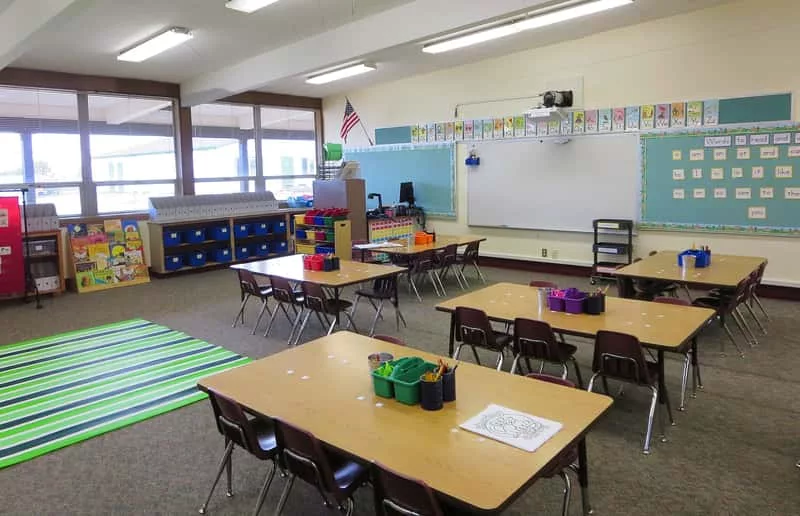In a bid to help Michigan school districts and educators ease the impact of the coronavirus pandemic, the U.S. Department of Education has approved nearly $390-million in funds tabbed as Elementary & Secondary School Emergency Relief — or simply ESSER — funds.
That word was shared this morning by the Michigan Department of Education which reports that the funds are part of $13.2-billion set aside in emergency relief funds to mitigate the impact of the COVID-19 public health crisis nationwide on elementary and secondary schools. The ESSER funding is a portion of the $2-trillion federal CARES Act money.
State Superintendent Dr. Michael Rice says, “These are vitally important resources to help our schools reduce the strain caused by this global pandemic,” and adds, “Schools can use the funds to meet a variety of current education needs, but must recognize that these funds are one-time revenues.”
The Michigan Department of Education will award 90-percent of the $389,796,984 in emergency relief funds to eligible local school districts based on the 2019-20 Title I, Part A funding formula, as required by the CARES Act.
Rice warns that the ESSER funds are a one-time appropriation and will not be ongoing funding for school districts, as he strongly recommends that districts reflect carefully about the best use of the funds, particularly given their technological needs and efforts to preserve their staffing and services to children in a challenging financial environment.
To receive funds, districts will submit an online application that includes a brief narrative of their most important educational needs; information on how they will provide equitable access to students, teachers, parents, and families; and a budget that outlines their intended use of allocated funds. School districts are encouraged to begin planning to meet the application requirements. There will be additional reporting requirements associated with the grant program, many of which are yet to be defined by the U.S. Department of Education.
According to the guidance handed down from the feds, local school districts may use ESSER funds for activities that align with the following:
- Any activity authorized by the ESEA of 1965, including the Native Hawaiian Education Act and the Alaska Native Educational Equity, Support, and Assistance Act, the Individuals with Disabilities Education Act (IDEA), the Adult Education and Family Literacy Act, the Carl D. Perkins Career and Technical Education Act of 2006, or subtitle B of title VII of the McKinney-Vento Homeless Assistance Act.
- Coordination of preparedness and response efforts of local school districts with state, local, tribal, and territorial public health departments, and other relevant agencies, to improve coordinated responses among such entities to prevent, prepare for, and respond to coronavirus.
- Providing principals and other school leaders with the resources necessary to address the needs of their individual schools.
- Activities to address the unique needs of low-income children or students, children with disabilities, English learners, racial and ethnic minorities, students experiencing homelessness, and foster care youth, including how outreach and service delivery will meet the needs of each population.
- Developing and implementing procedures and systems to improve the preparedness and response efforts of local school districts.
- Training and professional development for staff of the local school district on sanitation and minimizing the spread of infectious diseases.
- Purchasing supplies to sanitize and clean the facilities of a local school district, including buildings operated by such agency.
- Planning for and coordinating during long-term closures, including for how to provide meals to eligible students, how to provide technology for online learning to all students, how to provide guidance for carrying out requirements under the Individuals with Disabilities Education Act, and how to ensure other educational services can continue to be provided consistent with all federal, state, and local requirements.
- Purchasing educational technology (including hardware, software, and connectivity) for students who are served by the local school district that aids in regular and substantive educational interaction between students and their classroom instructors, including low-income students and students with disabilities, which may include assistive technology or adaptive equipment.
- Providing mental health services and supports.
- Planning and implementing activities related to summer learning and supplemental afterschool programs, including providing classroom instruction or online learning during the summer months and addressing the needs of low-income students, students with disabilities, English learners, migrant students, students experiencing homelessness, and children in foster care.
- Other activities that are necessary to maintain the operation and continuity of services in local school districts and continuing to employ existing staff of the local school district.
Section 18003 of Division B of the CARES Act provides the Michigan Department of Education the opportunity to reserve up to 10-percent of the state ESSER fund award to support allowable activities.
The department will use the allowable reserve to establish an educational equity fund. Those dollars will be allocated to eligible local school districts, with the primary purpose of reducing the digital divide across Michigan’s school communities. Additional information, including application guidelines and eligibility criteria, will be available in the coming weeks.






